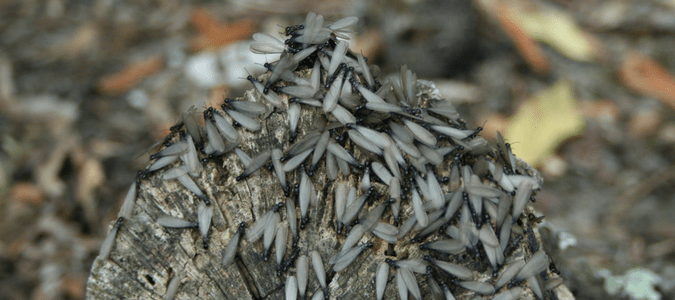
Termite swarms are a fast-paced phenomenon: One minute, there are no visible termites present. Several winged insects emerged from their nest the next minute and began to fly or crawl around. Within another minute, hundreds or thousands of termites are swarming out of their colony, ready to propagate their species.
An hour later, the termites are gone once again, receded to their home within the walls of your house or inside a rotten log outdoors. But how long do termites swarm, and how can you defend your property against these invaders, which are blamed for damage that costs U.S. homeowners over $1 billion each year to mitigate?
The term “termite swarm” refers to the phenomenon within a termite colony when, each spring, reproductive termites leave the warmth and darkness of their nest and come out into the open air by the thousands to mate. Many homeowners mistakenly believe termite swarms are destroying their property, which is incorrect; the swarm will not damage your home, garage, deck, or fence. A termite swarm is simply a part of the termite life cycle, and termites swarm solely for mating and reproducing. Swarms typically last a few weeks, although the start and finish can vary depending on weather patterns and other local conditions.
That said, seeing flying termites near your home is a reason for concern, as the closer these voracious pests get to your home, the bigger the risk of infestation. Let’s learn more about the termite life cycle, when you might see a termite swarm in your house, how and when termites swarm outside, and how to get rid of swarming termites.
Understanding The Termite Life Cycle
As we just mentioned, while a termite swarm itself does not damage your property, if you witness a swarm in or near your home, it means there is a termite colony living and thriving someplace nearby—and this colony could well be damaging the wood that makes up your house, garage or other structure. Termites feed on wood, so knowledgeable homeowners strive to keep these insects well away from houses, fences, pergolas, and garages. A termite colony can cause extensive damage that costs money to repair.
To understand termite swarms and their impact, it’s essential first to understand the termite life cycle. Each termite colony has a queen that lays many thousands of eggs during her life cycle. The eggs hatch into nymphs. What do baby termites look like? These tiny, pale larvae look like small, white ants. These nymphs molt several times, becoming larger each time they shed their exoskeletons until they finally mature into one of four adult termites: workers, soldiers, and primary and supplementary reproductives.
Worker Termites
Whether white or transparent, these termites live their lives within the colony. Their jobs are to gather food for the colony, build more tunnels and chambers, and care for termite eggs and baby nymphs.
Soldier Termites
More extensive and darker than the workers, soldiers work to defend their fellow termites by crushing ants and other invaders with their large mandibles.
Primary And Supplementary Reproductive Termites
These are the termites you see during a termite swarm. Their dark, nearly black bodies have long pairs of wings they use to fly out of the colony. Reproductives are responsible for mating, laying eggs, and forming new colonies.
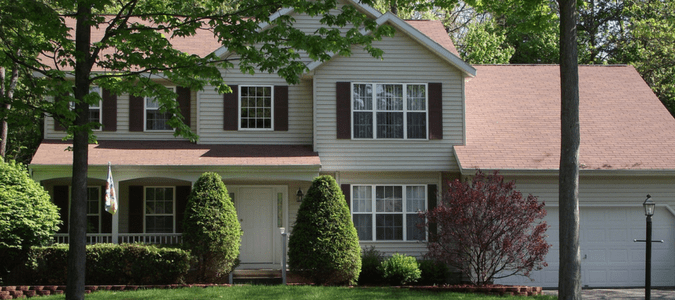
Termite Swarm In House: Signs Of An Infestation
When termites swarm to reproduce, they shed their wings before they mate and then move on to a new colony. If you spot a pile of tiny insect wings, often on a windowsill or near a baseboard inside your home, that’s a sure sign that you have a termite infestation—a colony of thousands of termites living inside your walls. Cracks in the walls near light fixtures are another place where you might see termite activity that signals the presence of a colony nearby.
Two common types of termites live in the United States, and they cause differing levels of damage to homes and other structures: subterranean and dry wood termites.
Subterranean Termites
This is the most common type of termite that homeowners encounter. Unfortunately, they also typically cause the most damage. Despite that fact, subterranean termites don’t live indoors, per se; instead, they make their colonies in the soil, which provides the moisture they need to survive. They still feed on wood, however, so they establish colonies in the ground near a food source, such as a house, tree, or wooden fence. Then the worker termites build mud tubes leading from their nest to the wood to provide the food their colony needs. If you see long, narrow lines of mud attached to your home’s foundation or your fence near ground level, that signifies a subterranean termite infestation.
Drywood Termites
The other primary type of termites in the U.S. doesn’t need to build their homes in the soil, as they don’t require as much moisture to live as subterranean termites. They still feed on wood, however, just like their subterranean counterparts, so if they form a colony inside a home, it will typically be in the attic or within wooden flooring. Drywood termite colonies are typically much smaller than subterranean ones, so they don’t cause nearly as much damage to people’s homes and property.
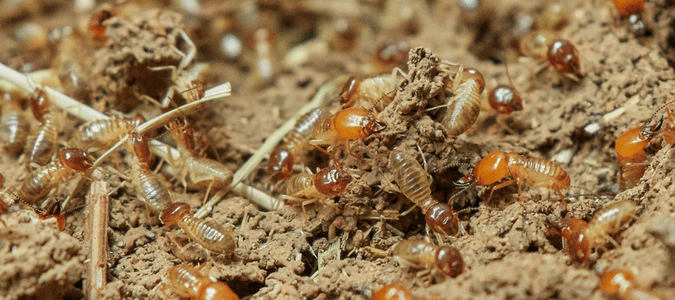
Termite Swarm Outside House: Telltale Signs Of Infestation
Drywood termites can also make their homes outdoors, inside of dead trees or other rich wood sources for food. If you have a wooden structure on your property that is in disrepair, such as an old, rotting picket fence, for example, or a falling-down shed, these are prime spots for a termite infestation of either the dry wood or subterranean variety.
Subterranean termites are more likely than dry wood termites to create colonies outside your house that is still hazardous to your home. If subterranean termites tunnel from their nests to your house, fence, outdoor deck, or garage, they will happily feed their entire colony for many seasons — and subterranean colonies can grow to be enormous, numbering in the many thousands or even hundreds of thousands, and sometimes in the millions. This is why if you spot any of the signs of an infestation—piles of wings, mud tubes, individual termites (or what looks like winged ants), or an actual termite swarm—it is essential to contact a reputable pest control specialist as soon as possible, to address the problem before it spreads.
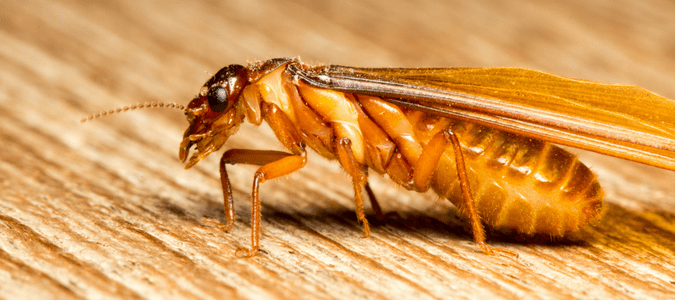
When Do Termites Swarm?
Termites typically swarm in the spring, often during the rainier parts of the year or shortly after it ends, when the weather is warm and humid. Depending on which region of the country you live in, the exact time of year when local termites swarm may vary, but for most regions in the U.S., termites’ reproductive activity generally occurs in mid-to-late spring.
As we’ve already mentioned, swarms are actually a part of the termite life cycle; they occur when a termite colony has grown large enough that it’s time to reproduce and divide into new colonies. The reproductive termites that mate and lay eggs will then establish a new colony, and the female reproductive will become that colony’s queen.
For this reason, it’s a good idea to keep an eye out for any signs that termites might have taken up residence in or near your home or property each spring. Again, telltale signs include “winged ant” sightings (which might actually be ants with wings but could easily be termites); termite swarms; mud tunnels on the lower portion of your home, garage foundation or fencing, and individual or piles of wings that reproductive termites have shed before mating.
If you notice any of the above signs, it’s time to investigate whether you have a termite infestation. Since distinguishing between termites, ants, and other types of insects can be challenging for the average homeowner, it’s best to contact an experienced, professional pest control specialist to come to inspect your home and determine whether you have an infestation of subterranean termites, dry-wood termites, ants or any other pest.
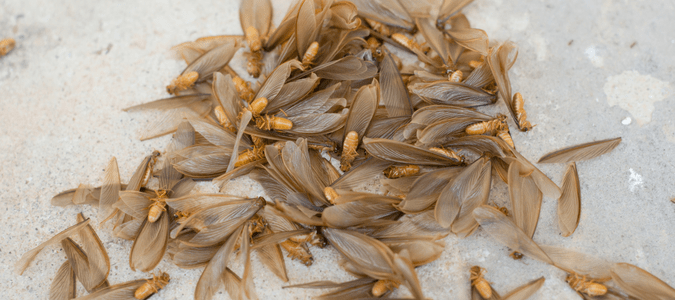
How To Get Rid Of Swarming Termites
There are several tactics that homeowners can employ to keep termites away from their homes and other areas around their property:
- Keep all fences and other structures on your property in good shape. If you have a shed, fence, or other structure that is rotting or in disrepair, fix or remove it to discourage termites from moving in.
- Keep dead trees, logs, and other brush cleared from your property, or at the very least, keep them away from your home and garage.
- If you build a new fence, pergola, deck, or any other outdoor structure, use treated wood made with chemicals that repel termites.
- If you are building or rebuilding any portion of your home, have metal shields installed along the foundation as a barrier between your home and any soil-dwelling subterranean termite colonies.
- Hire a trained termite specialist to visit your home annually to inspect all structures, yards, and trees. ABC’s pest control specialists are trained to identify signs of an active termite colony, so it can be treated and eliminated before any damage occurs or spreads.
ABC Home & Commercial Is Your Go-To Pest Control Service
At ABC Home & Commercial, we are leaders in termite control. Our experienced termite exterminators use physical strategies, such as metal shields along a home’s foundation, removal of dead wood from the property, and pesticides that target termites and their reproductive cycle. We can treat the soil around your home and determine whether termite-damaged wood needs to be treated, repaired, or replaced. With annual termite inspections by our pest control specialists, you can be sure your home is guarded against these unwelcome pests that pose a risk to your most significant investment.